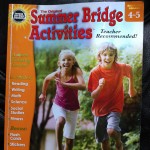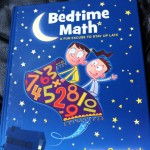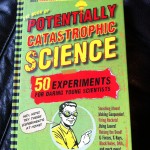From a family-togetherness perspective, summer is a fantastic thing: family trips, camping, and, if you’re lucky, a vacation. Families often use summer as a chance to bond as a family but also to unwind. This is why camping vacations to places like Iceland are so in demand. If you are interested in visiting Iceland yourself, you can look here for more information. This gives these families time in the great outdoors and a chance to just hang out. Some families also look for local, kid-friendly places to keep their children active and having fun, as well as try to spend time together as a family (See – best ranked family entertainment near me for more information). But from the school perspective, summer is a disaster. Most education experts say that kids lose about three months of knowledge over the summer and teachers have to spend the first two months of the new school year catching up. Fortunately, there are ways-most of them painless-to keep what your kids learned last year firmly inside their head. This week, we review three books that, besides offering a great way to stay connected with your kids, will help you brush up on a few subjects you probably haven’t used in a decade. All three authors were guests on Armin Brott’s “Positive Parenting” radio show. You can listen to those interviews at mrdad.com/radio, then search for the author’s name.
Summer Bridge Activities (Carson-Dellosa Publishing, Greensboro, NC)
 This book (it’s actually part of a series, one for the summer between each year of elementary school-1-2, 2-3, 3-4, etc.) is pretty traditional, meaning it has worksheets, graphs, maps, and even some flashcards. But it manages to keep kids and parents engaged while reviewing last year’s learning and getting a head start on next year’s. Besides math, reading, writing, and other academic subjects, the books also include physical fitness (actually doing it, not just reading about it) and suggestions for family field trips.
This book (it’s actually part of a series, one for the summer between each year of elementary school-1-2, 2-3, 3-4, etc.) is pretty traditional, meaning it has worksheets, graphs, maps, and even some flashcards. But it manages to keep kids and parents engaged while reviewing last year’s learning and getting a head start on next year’s. Besides math, reading, writing, and other academic subjects, the books also include physical fitness (actually doing it, not just reading about it) and suggestions for family field trips.
Bedtime Math: A Fun Excuse to Stay up Late, by Laura Overdeck (Feiwel and Friends, New York)
 Bedtime stories are a wonderful way for families to spend time together-and to get kids to learn to love books. But have you ever wondered why we don’t do math with our kids before they go to bed? Sadly, math gets dumped into the category of things that most people do only because they have to, not because they want to. The goal of Bedtime Math is to change all that and to make math a fun, engaging part of our kids’ lives, to make it as beloved as the bedtime story. Each section (there are more than 30) starts with fun piece of trivia about such topics as flamingos, bungee jumping, exploding food, and team mascots. Then, there’s an equally fun math problem that uses what you just read as “props.” Actually, there are three problems on the same topic: one that involves mostly simple addition and subtraction, one that might require some basic multiplication, and one that incorporates logic along with the other math functions. It’s all such fun that you’ll find yourself reading the book long after the kiddies have fallen asleep.
Bedtime stories are a wonderful way for families to spend time together-and to get kids to learn to love books. But have you ever wondered why we don’t do math with our kids before they go to bed? Sadly, math gets dumped into the category of things that most people do only because they have to, not because they want to. The goal of Bedtime Math is to change all that and to make math a fun, engaging part of our kids’ lives, to make it as beloved as the bedtime story. Each section (there are more than 30) starts with fun piece of trivia about such topics as flamingos, bungee jumping, exploding food, and team mascots. Then, there’s an equally fun math problem that uses what you just read as “props.” Actually, there are three problems on the same topic: one that involves mostly simple addition and subtraction, one that might require some basic multiplication, and one that incorporates logic along with the other math functions. It’s all such fun that you’ll find yourself reading the book long after the kiddies have fallen asleep.
Potentially Catastrophic Science: 50 Experiments for Daring Young Scientists, by Sean Connolly (Workman, New York)
 Despite the name, the experiments in this book aren’t really all that dangerous-as long as you and the kids follow the directions. The book is like an archeological dig through 34 of the greatest scientific breakthroughs in human history. We start with Stone Age choppers and the discovery of fire more than a million years ago, and go all the way through rocket launches, lasers, and DNA. Each experiment includes a brief explanation of what made the invention so special, what it does, and where the potential for catastrophe was. Those overviews are so entertaining (and educational) that you could, theoretically, quit right there. But why would you when you’ve got step-by-step instructions for how to actually replicate what you’ve just read about? You’ll have a blast-especially in the chapter that talks about gunpowder.
Despite the name, the experiments in this book aren’t really all that dangerous-as long as you and the kids follow the directions. The book is like an archeological dig through 34 of the greatest scientific breakthroughs in human history. We start with Stone Age choppers and the discovery of fire more than a million years ago, and go all the way through rocket launches, lasers, and DNA. Each experiment includes a brief explanation of what made the invention so special, what it does, and where the potential for catastrophe was. Those overviews are so entertaining (and educational) that you could, theoretically, quit right there. But why would you when you’ve got step-by-step instructions for how to actually replicate what you’ve just read about? You’ll have a blast-especially in the chapter that talks about gunpowder.
###
